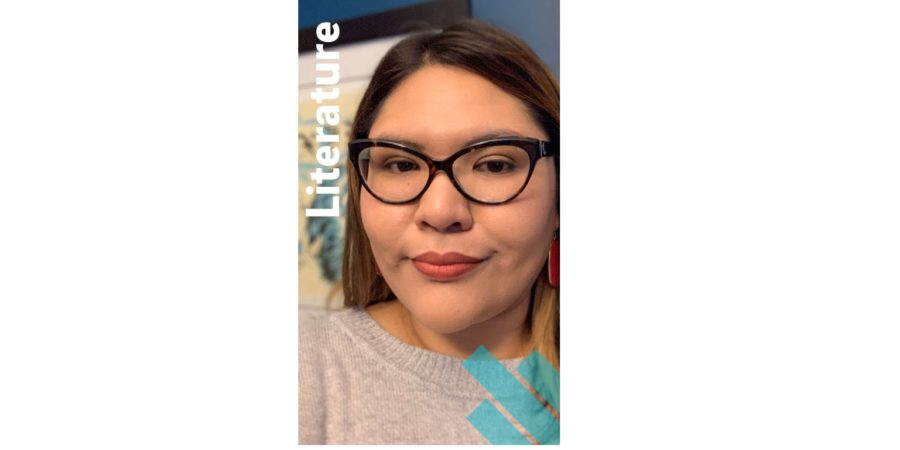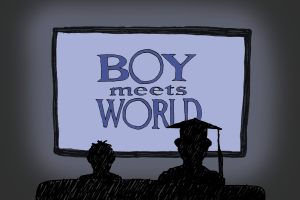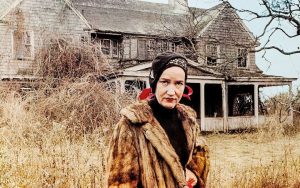Ariana Ruiz: A Community of Confidence
Photo by 373367246007101/ UCSD Guardian
Oct 31, 2021
Even amidst the pandemic, students and staff alike arrive on campus and find their way into the UC San Diego community. One such professor is Ariana Ruiz, a first-generation college student whose life experiences shaped her teaching practices today.
In a time of uncertainty or conflict, a person’s connection to their roots can provide inspiration.
Professor Ariana Ruiz, member of the UC San Diego literature department and first-generation American, offers many courses at the school discussing a heritage she shares with many San Diegans: Mexican origin.
Throughout her classes, she offers her perspectives on the social currents and underlying themes from the past through today.
Ruiz grew up in Inglewood, California, a city in the greater Los Angeles area. Both of her parents were immigrants from Mexico. Growing up, Ruiz never learned much about the Chicanx community, or the history of the Chicanx movement.
California previously had no ethnic studies requirement for its public schools; Governor Gavin Newsom signed a bill on Oct. 8 mandating a semester-long ethnic studies course for California public high school in order for students to graduate.
As a first-generation college student, Ruiz pursued her path to higher education without familial precedent. With her high school’s focus on getting their diploma, their information available for hopeful college scholars was much more limited.
“I just didn’t know what the process looked like,” Ruiz told The UCSD Guardian. “My parents were very much of the mindframe of, ‘you’re going to college. We don’t understand college, we don’t know how it works, we don’t know the difference between a community, Cal State, UC, we just know that this is what you are going to do.”
Even without a clear aim for what she was in for, Ruiz charged straight ahead into her pursuits. She enrolled in the undergraduate program at UC Santa Cruz as an environmental science major, despite her known love for literature.
As time went on, Professor Ruiz found herself with a supportive community around her, both of university staff and other students. She strayed from the math and science classes that left her confused rather than captivated. Instead, she pursued literature and learning about her Chicanx heritage.
The subject empowered her, leaving her wondering how her life’s trajectory might have changed if she’d learned about it even before college. In a culture of poor representation and identity erasure, to Ruiz, “it meant a lot to be seen within the curriculum.”
She was not the only one who felt the impact of the curriculum. According to a study by UC Santa Barbara, students felt more engaged and achieved greater academic success when they had the opportunity to take classes representing their own history.
The benefits weren’t only limited to ethnic students, however; students of other ethnicities appreciated the chance to learn about other cultures and expand their empathy as well.
While working alongside Kirsten Silva Gruesz in a mentorship program, Ruiz worked on a literature project together, truly opening her eyes to the prospects of a career centered around literature.
She obtained a new goal: to become a K-12 teacher and help her students embrace ethnic studies from a younger age.
With her love for both teaching and literature, as she entered graduate school, Ruiz was torn between the educational and literature tracks. Despite her initial plans to teach K-12, she quickly realized that her passion for developing her own ideas burned too bright to be brushed aside.
Ruiz sought a PhD with the opportunity to develop her ideas centered around Chicanx/Latinx literature. Throughout her post-graduate studies, she attended the University of Illinois in Champaign-Urbana.There, she experienced a cultural clash between the Californian environment she grew up in and her new home in the midwest.
Unlike her previous schooling experiences, Ruiz described the University of Illinois as a predominantly white institution; even more so than where she’d been before, there was little representation amidst the faculty or student body. Of the Fall 2020 admissions, only 11.2% of the students self-described as Hispanic.
“That for me was another space where I had to kind of learn how to create community for myself,” Ruiz commented, “community that isn’t naturally just there.”
Throughout her education, Ruiz sought out students who had similar experiences of feeling different. Together, they were able to navigate the unfamiliar environment and allowed Ruiz to thrive, earning her degree and propelling her forwards on her career path. She continues to seek community support and connection today.
At the University of Iowa, where Ruiz first taught, she encountered the same thing: a dominantly white environment. Though her classes featured greater ethnic diversity than others, only two or three students were people of color.
Ruiz has developed a teaching practice intrinsic to her style: she examines her own course through the eyes of a student who has no familiarity with the material or its contents. Understanding that students may not have had access to the information she teaches, she ensures that no prior information is needed to excel in the course.
Using her own experience first encountering Chicanx literature as a starting point, Ruiz imagines how a student might feel encountering ethnic literature for the first time. Ruiz then accounts for what resources and information the students may need, allowing her to create a sense of equity within her classroom.
Ruiz ensures that students have the information they need to succeed; she wants to “level the playing field, to a certain degree.”
For instance,Ruiz promoted information about the McNair Program to her students, a research opportunity very similar to the faculty mentorship program she took part in at UCSC.
Ruiz mentioned that it was very important that students know these opportunities are available and accessible in order for them to achieve their greatest academic potential.
She also loves to examine the course from a fresh perspective to retain her excitement for the coursework and join her class in the joy of reading a novel for the first time. “Like, it’s the first time we’re reading “Under the Feet of Jesus,” she excitedly explained, “look at all this symbolism, look at these connections!”
Ruiz’s time instructing at the University of Iowa, however, came to a close. After becoming a mother, she left the University of Iowa and returned to California to be near her family. She wanted to be surrounded by the people she grew up with, and allow her own child to have that same connection.
Following her move, Ruiz began teaching at UC San Diego, immersing herself once again in the rich culture of southern California.
From the closeness to the border to the excitement with which Ruiz discusses the possibility that, in 1848, María Ruiz de Burton was writing just down the road; San Diego is a location of great historical and modern-day significance for the Chicanx community.
Once in San Diego,Ruiz set to work to once again establish a sense of community. Her connections to other faculty, as well as students, embody her goals as a professor.
In teaching, Ruiz hopes to help build students’ confidence and empower them to pridefully take their seat in the classroom and contribute their unique perspective.
She hopes to move away from the “Bank Model” of education where the instructors fill the “empty vessel” of the students with information.
Instead, the aim is to share insights in order to build a more comprehensive vision of a text — and to build a community within the classroom. She promotes discussion within the classroom, ensuring that students get the chance to voice their own perspectives in each class, both in small groups and with the class as a whole.
Even though her classes are still online, Ruiz endeavors to create that genuine connection through the screen.
In addition to guaranteeing time for discussion in every class, she also makes it abundantly clear to her students that she is available. She described her efforts to make herself as accessible as possible, through appointment, email or after class: “there’s all these different mediums that are involved, in hoping that people do reach out if they feel like they need to.”
The community aspect of the university, and of the city, is of the utmost importance to Ruiz; it creates a sense of belonging for herself and others.
Ruiz’s journey through the unknowns of the college experience, as well as her ventures to build a community where students are supported and encouraged, has left her with a message for students: push yourself to try out new things.
While joining Ruiz’s literature class is certainly one dimension of her suggestion, she hopes to inspire people to challenge themselves, in order to develop skills and grow as a person.
“That’s where you really learn to challenge yourself and to grow as an individual,” Ruiz said. “And that’s also where you start making those really cool connections with other courses in ways that you might have not anticipated.”
She encourages students to connect with the material, with their teachers and with each other; after all, that’s the best way to create foundations for a lifetime of success.
Photo courtesy of the UCSD Arts and Humanities Department.














